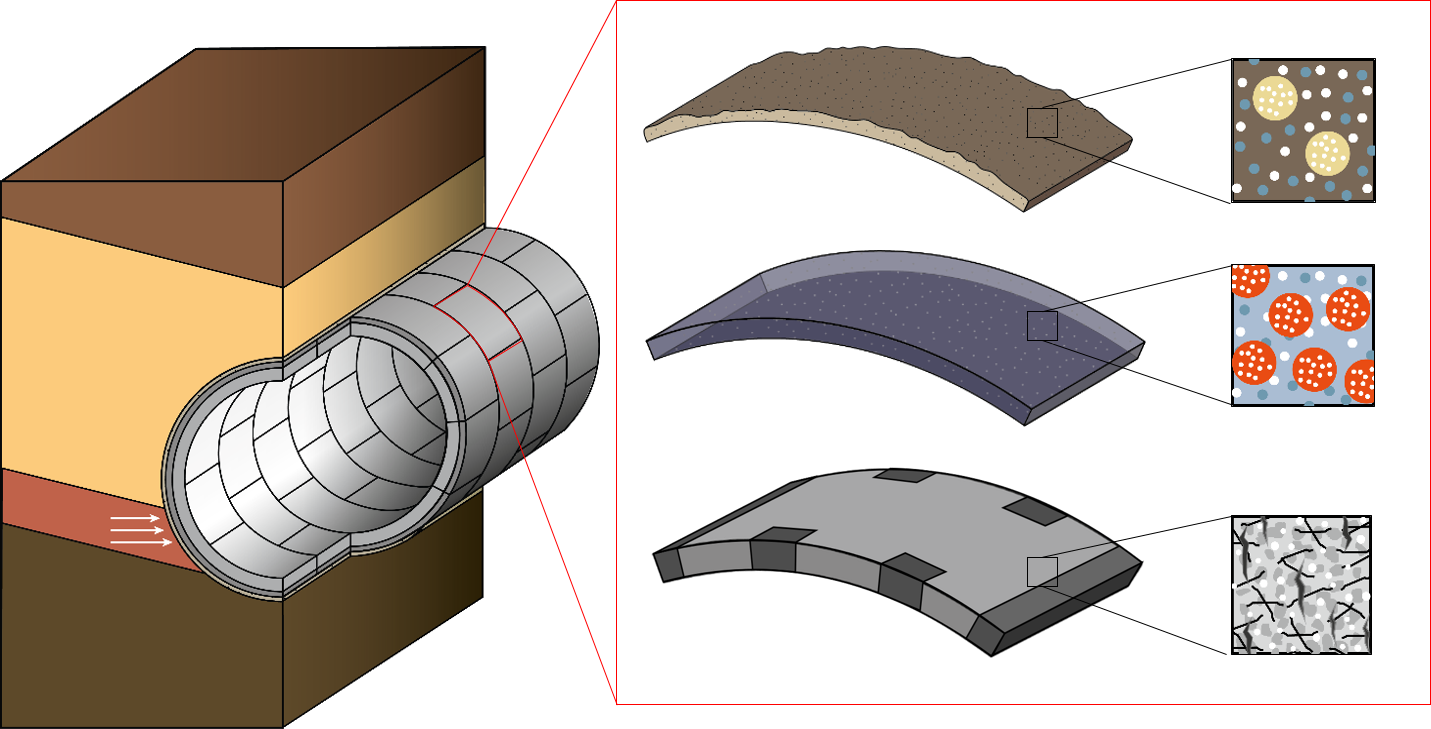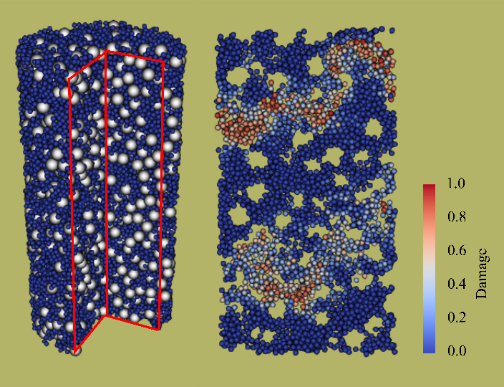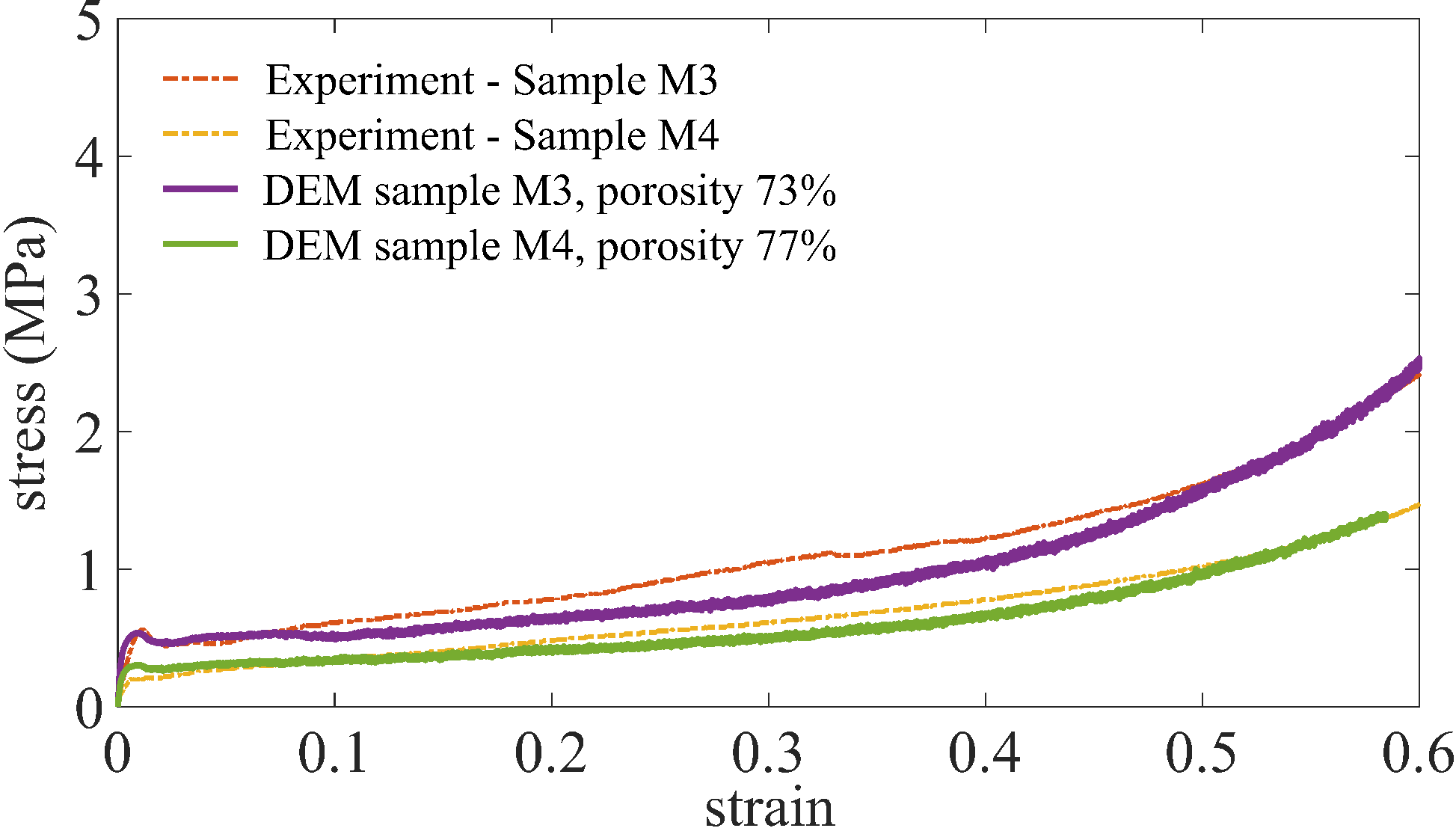Tunnel construction in difficult geological conditions may cause the degradation of the lining elements. Segment lining integrity can be enhanced by incorporating layers of compressible cementitious materials in combination with a compressible gap grout. This allows the lining to accommodate any expected large deformations post-construction without any structural damage (Fig.1 left). Within the framework of the SFB 837, in sub-project B2, numerical models are developed in co-operation with experimental sub-projects B1 and B3 to generate suitable material and structural designs for damage-tolerant segmental linings that will be deployed in difficult geological conditions.

At the material scale, the compressibility of the material and its behaviour is governed by the material composition. A typical design mix of the compressible cementitious composites consists of cement, water, foaming agent and low-strength aggregates such as Polystyrene foams of different sizes. Under a confined compression test, complex phenomena can be observed: pore collapse, fracture and large deformation with a highly non-linear response. The deformation of the compressible cementitious composite material is simulated using the Discrete Element method (DEM). DEM is an explicit numerical scheme that can describe the mechanical behaviour of assemblies of particles whose displacement is governed by Newton’s laws of dynamic equilibrium. For a model-based characterization of the behavior of a compressible cylindrical specimen, samples with high void volume fraction were generated and subjected to confined compression (Fig. 2, left). It has been found that the interplay between porosity and the distance factor (between Discrete Elements) can replicate the desired behavior of the compressible material, indicated by the elastic deformation, plateau and densification stages (Fig. 2, right). The simulation results are compared with experimental results in Fig.2, right. The results of the simulation reveals that damage initiates at an arbitrary weak point in the medium and propagates to form a compression band. A similar mechanism of formation of a compression band is observed at other locations in the material. At the plateau stage, the material experiences both softening and hardening due to fractures and contact of crack faces, respectively. As all the voids collapse, the densification stage begins, characterized by the regain in the apparent stiffness of the material. The sample can be compressed up to a deformation of 45%. DEM model can be used to model qualitatively and quantitatively the material for the deforming grout by providing a simple approach to look into different mechanisms during compaction process.


M.Sc. Tagir Iskhakov
tagir.iskhakov@rub.de
+49 234 / 32-29059